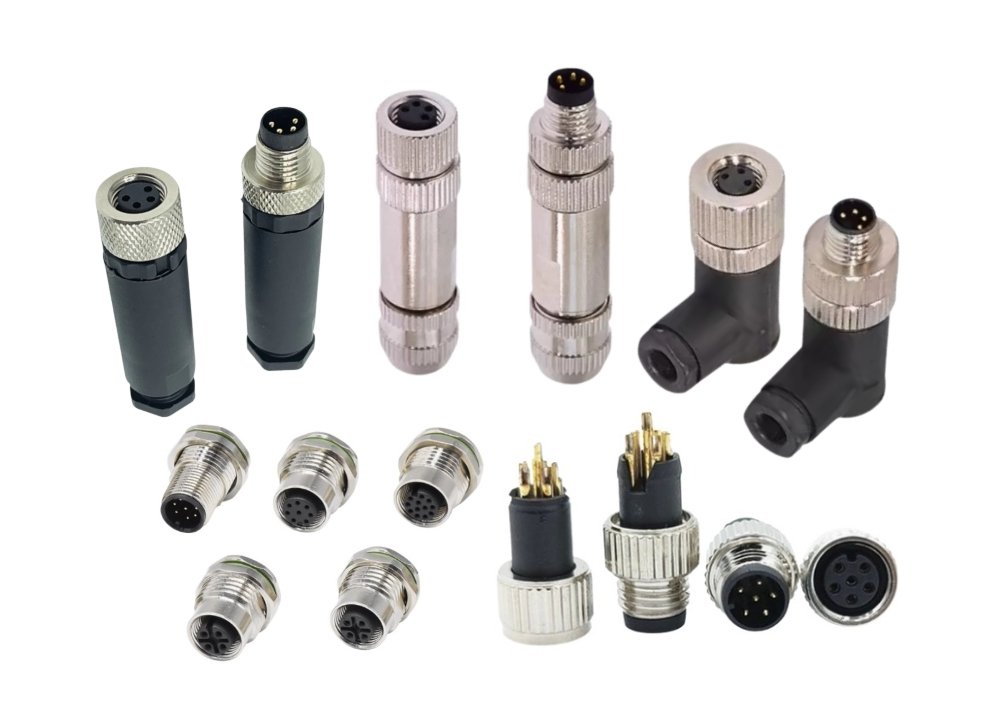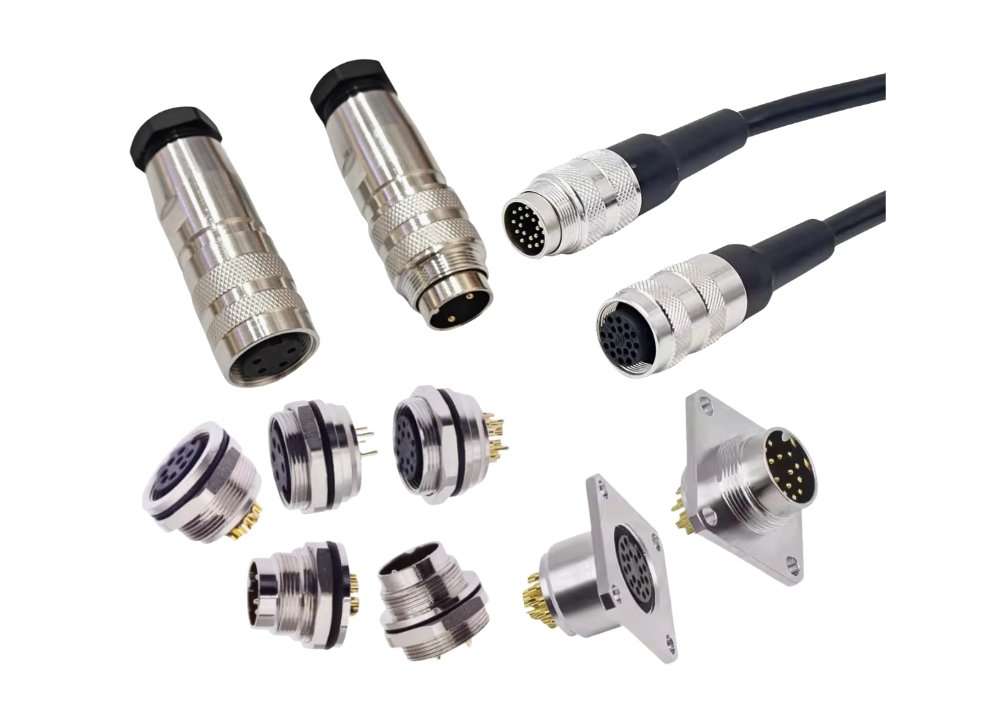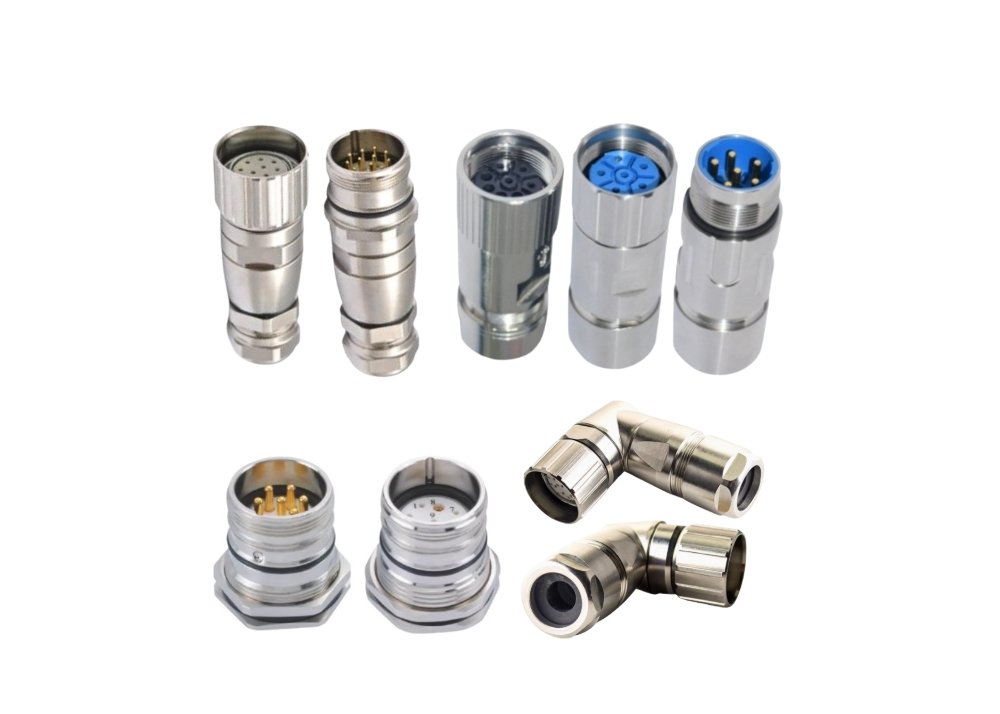As the “nerve node” of the electronic system, the classification of connectors requires a comprehensive analysis from multiple dimensions such as structural form, transmission medium, functional scenario and environmental adaptability. The following is a systematic review of the core classification system of connectors based on industry standards and technical characteristics.
1. Classification by structure and connection method
A: Plug-in connectors
a: Circular connectors: Use threaded or bayonet locking, have 360° shielding and IP67 or above protection, suitable for vibration and humid environments.
Typical models: MIL-C-5015 (military), M8/M12 (industrial sensors).
Applications: aircraft avionics systems, industrial robot joints.
b: Rectangular connectors: High-density pin layout, support composite signal transmission.
Typical models: D-sub (computer serial port), USB-C (data transmission + power supply), HDMI (audio and video).
c: Package connectors: Such as BGA (ball grid array), high-density connection between chip and PCB is achieved through micro-ball solder joints, used for CPU and GPU packaging.
B: Board-to-board connectors
Vertical or parallel stacking of PCB boards, the spacing can be as low as 0.4mm, and the transmission rate can reach 112Gbps (PAM4 signal).
Applications: smartphone motherboards, server backplanes.
C: Wire-to-wire/wire-to-board connectors
Quickly terminate wires by crimping or IDC (insulation displacement) technology, such as automotive wiring harness terminals.
| 2. Classification by transmission medium | |||
| Types | Core features | Representative models | Application scenarios |
| Electrical connectors | Transmit current/voltage signals | USB, power socket | Consumer electronics, industrial power supply |
| Optical connectors | Fiber optic transmission, loss <0.3dB | LC, SC, MPO | Data centers, 5G base stations |
| RF connectors | High-frequency signal transmission (GHz level) | SMA, N-type | Mobile phone antennas, radar systems |
| Fluid connectors | Quick connection of liquid cooling loop | Quick-plug sealing connector | Server liquid cooling, nuclear reactors |
3. Classification by application scenario and function
a: Automotive connectors
High-voltage connectors: withstand voltage 1000V+, current 250A (such as charging guns), need to pass vibration + salt spray double test.
In-vehicle RF connectors: support 5G-V2X communication, impedance strictly matched to 50Ω.
b: Communication equipment connectors
High-speed backplane connectors: transmission delay ≤5ps/mm, used for 400G optical modules.
Fiber optic adapters: Ceramic ferrules have an accuracy of μm level to ensure near-zero loss of the optical path.
c: Military/aerospace connectors
Radiation-resistant type: titanium alloy shell, resistant to cosmic rays and -65℃~175℃ temperature difference.
Hermetic packaging: glass-metal sealing, anti-vacuum leakage (leakage rate <10⁻⁹ Pa·m³/s)
4. Classification by environmental tolerance
Sealed connector: IP68 waterproof (10 meters underwater), dustproof (such as outdoor monitoring equipment).
High temperature resistant connector: PEEK insulator + gold-plated contacts, operating temperature > 200°C (engine compartment).
Triple-proof connector: anti-salt spray + mold + damp heat, surface coating thickness > 3μm (ship electronic system).
5. Technological evolution and domestic breakthroughs
High frequency and high speed: 6G promotes the development of terahertz connectors (Rosenberger QTD series supports 1Tbps).
Material innovation: Gallium nitride (GaN) contacts improve current carrying capacity, and bio-based plastics reduce carbon footprint.
Domestic substitution: Luxshare Precision high-speed backplane connectors have entered Huawei’s supply chain, and AVIC Optronics’ military connector self-sufficiency rate exceeds 90%.
Industry challenges: The life of consumer electronics connectors is only 5,000 times (vs. 50,000 times for industrial grade), and cost and reliability need to be balanced.
💎 Summary
The classification of connectors is essentially a mapping of performance requirements and environmental constraints: circular connectors protect aerospace safety with mechanical stability, rectangular connectors drive computing power upgrades with high-density integration, and fiber/RF connectors are becoming the “light speed bridge” of the digital society. In the future, with the integration of miniaturization (0.4mm pitch) and intelligence (built-in sensors), connectors will be upgraded from passive components to “intelligent interfaces” of the system.




